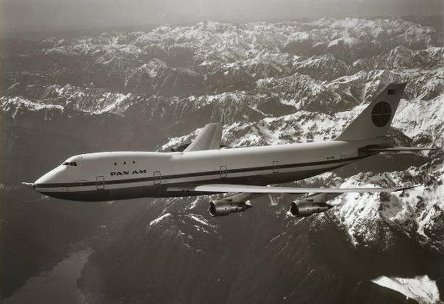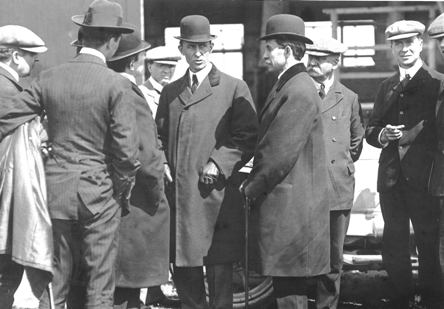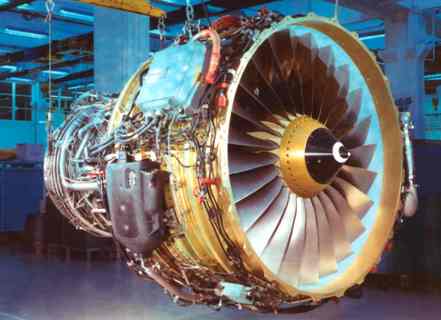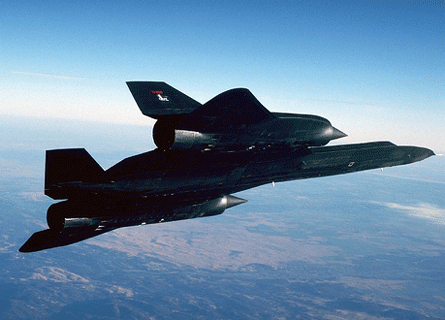
It is always a slightly nerve-racking moment for an editor to commission a reader’s poll. Quite simply, what happens if so few people participate that the exercise becomes a farce?
It very quickly became apparent that no such ignominy awaited the 100 Greatest exercise marking Flightglobal.com's print edition, Flight International’s centenary. Votes poured in for your choices in the fields of most influential Civil Aircraft, Military Aircraft, Person, Engine and Moment.
By the time the poll closed on 20 June, no fewer than 18,000 of you had voted – thank you for having taken the trouble to do so and making this a more than worthwhile exercise.
Space is always limited in any publication, so the temptation to write mini-articles on every entry in our list had to be resisted. To those of you whose favourite personality or piece of machinery does not receive the words you feel he, she or it derived, our apologies.
Many of the entries listed below will come as little surprise. Others may occasion a raised eyebrow or two. The more hard-core technical readers may be surprised to see Antoine de Saint-Exupery appear as high as 25 in our list.
Indeed, younger techies’ initial reaction may well be ‘Antoine Who?’ But we like to think that his presence is a sign that romance in the field of aviation is not yet entirely dead. And with the industry struggling with oil heading north of $140 a barrel, heaven knows a touch of romantic distraction would not go amiss at present.

1 Moment 1969 – Apollo 11 moon landing
None of us will live to see it, but Man will journey through the galaxy eventually and this was our species’ first, small step away from planet Earth.

At 10:56 Eastern Daylight Time on 20 July 1969 more than half a billion people watched a grainy, black and white television picture as Neil Armstrong made his own ‘One small step for a man, one giant leap for mankind’ as he stepped off the ladder of the Lunar Excursion Module Eagle on to the surface of the moon.
Perhaps the most surprising aspect of the moon landing was how very quickly it had come about. It was, after all, just eight years and two months since President Kennedy had announced the goal of sending and successfully bringing home a manned mission to Earth’s nearest celestial neighbour.
Considering that declaration came just three weeks after the first US venture into space – and that, a mere sub-orbital hop – it looked ambitious indeed. NASA’s website acknowledges that it was very much a Cold War riposte to the Soviet Union, which had beaten the US into space with Yuri Gagarin’s flight the previous month.
Having survived the catastrophic start to the programme of losing three astronauts in the Apollo 1 launch pad fire, the programme moved with astonishing rapidity. There were seven launches between November 1967 and May 1969, steadily expanding the flight envelope of the Apollo Command and Lunar Modules.
Apollo 11 lifted off from Florida’s Cape Kennedy Space Center on 16 July 1969. Four days later, the Eagle separated from Command Module Columbia and – after a longer than anticipated flight to the surface – landed in the Sea of Tranquillity with a nail-biting 40 seconds of fuel remaining.
In the 2h 32m Armstrong and Aldrin were on the lunar surface there was time to do little more than gather a consignment of moon rock for later analysis and set out a small package of scientific experiments
The significance of the scientific achievement pales against the human achievement in doing the deed.
2 Civil Aircraft Boeing 747
The world’s first wide-bodied airliner and probably the world’s most recognisable airport apron resident for non-aviation people.

The Boeing 747 tapped into a rapidly-growing 1960s demand for air travel. This growth had led to concerns that airports would become clogged with increasing numbers of aircraft. Producing aircraft that could carry larger numbers of passengers was seen as a way around the problem.
Legendary Pan Am chairman Juan Trippe urged Boeing to look at a design much larger than the company’s highly-successful 707.
This coincided with Boeing losing out to Lockheed for an ultra-large military transport (the C-5A Galaxy); the contest allowed the Seattle airframer to take advantage of the high bypass engine technology developed for it and use it for a new civil design.
Almost four decades on, the statistics behind the first 747 remain impressive. Its tail was as tall as a six-storey building and the first models had a fuselage length of almost 69 metres.
Building the prototype required the construction of the world’s largest building by volume, the 200 million cu.ft. assembly plant at Everett, Washington.
The project was not without risk. Boeing had to borrow heavily to fund 747 development and came close to ‘betting the farm’ on its new airliner. It succeeded and the 747 family has been a major revenue stream for the company.
The 747 entered service in 1970 and Boeing went on to build 250 747-100A and -100B models. The 747-200 appeared just a year later, with further increased payload and the capability of being produced in freighter and Combi passenger-freighter layout. It was the last model to feature the characteristic spiral staircase to the upper cabin that featured in so many publicity photographs.
The final 747 Classic, the -300, appeared in 1983 and brought the first readily-visible external difference to the design, with its extended dorsal hump.
The first new-generation 747-400, incorporating two-man glass cockpit and winglets, entered service in 1989 and will in turn be succeeded by the quieter, more frugal 747-8, whose first deliveries are scheduled for late 2009.
3 Person The Wright Brothers
Man had been trying to emulate the birds for centuries. Previous attempts had been stymied by several factors, including lack of sufficient propulsive power and directional control. That was until Ohio bicycle manufacturers Orville and Wilbur Wright took their Wright Flyer 1 to Kitty Hawk, North Carolina, in December 1903.
 |
|---|
The Wright Brothers in the centre of the picture: Wilbur third from left, Orville facing left |
The brothers were notable for their methodical, documented steps in moving towards the first manned, powered and controlled flight. Having studied the way in which birds modified the shape of their wings to manoeuvre, they designed a small biplane glider in 1899. This tested wing warping, or twisting, as a means of turning the machine.
Over the next four years a series of gliders followed, with the 1902 model using the three-axis controls that remain the basis of fixed-wing aircraft control today. These gliders were often flown initially as kites.
The gliders grew steadily larger and increasingly carried a pilot, lying prone on the lower wing.
Results were not as good as expected, however, which led them to a fundamental review of the generally-accepted mathematical calculations for estimating lift for a given size of wing.
The discovery that this theorem seriously over-estimated the amount of lift generated, plus a series of tests on miniature wings in a 2m-long wind tunnel of their own creation, led them to refine their design.
Unable to find an engine with sufficient energy for a powered flight, they devised their own, with their bicycle shop mechanic Charlie Taylor building it in six weeks. They also manufactured two wooden pusher propellers of remarkably efficient form, which were arranged to counter-rotate to eliminate torque.
Kitty Hawk was chosen as their test site partly because of its consistent breezes off the North Atlantic, which would provide a headwind into which the aircraft could be launched and partly because of its remoteness – the brothers were not keen on having the press around after earlier unhappy experiences with journalists.
On 17 December the spruce-framed Flyer, piloted by Orville, finally succeeded in taking to the air for 12 seconds, travelling 36m (120ft). To put this into perspective, this is roughly half the length of a Boeing 747’s fuselage.
Although there are contending claimants for the title of first successful powered flight, it is generally accepted that the Wright Brothers were successful in the first controlled, sustained flight by a heavier-than-air manned, powered aircraft. Everything else follows on from the two brothers from Ohio.
4 Civil Aircraft BAE/Aerospatiale Concorde
It is not often that the progress of aviation goes into reverse, but the completion of Concorde’s last commercial passenger flight on 24 October 2003 doubled the flight times on routes previously served by the Anglo-French supersonic airliner.

One of the most remarkable pieces of aeronautical design ever to get airborne, its cost spiralled six times above initial estimates and the UK and French Governments had to write off the development costs.
Initial sales prospects with major airlines seemed reasonable, but a combination of factors – including the quadrupling of oil prices in the early 1970s and environmental concerns over its sonic boom – meant that only Air France and British Airways took the elegant ogival-delta on charge.
The Boeing 747 took more votes in our poll, but arguably only Concorde had the charisma to make airport visitors stop and stare every time it took off throughout its 27 years of service.
5 Engine Rolls-Royce Merlin
Aero engines rarely gather to themselves a glamorous image, but the Rolls-Royce Merlin was an exception to the rule. Admittedly, it was its association with the ultra-glamorous Supermarine Spitfire in 1940 that helped it stake out this reputation, but even today, its distinctive note at airshows can make elderly ex-pilots grow misty-eyed.

The Merlin appeared after it became apparent in the early 1930s that the earlier Kestrel was approaching the limit of its development.
The Merlin, initially designated PV12 for Private Venture, as it was funded from the company’s internal resources, grew immensely in importance in the middle of the decade when its promise of low frontal area, compactness and high power output saw it chosen as the powerplant for both the Spitfire and Hawker Hurricane. The 1,030hp (770kW) Merlin II appeared in 1938.
A 12-cylinder, 60-degree ‘upright Vee’ liquid-cooled powerplant, the Merlin proved to have great development potential. The 1,175 hp (876 kW) Merlin XII appeared on the production lines as the Spitfire Mark II was introduced in June 1940; eventually the Merlin 130 would reach 2,030hp.
The engine’s qualities were acknowledged by its choice as powerplant for other iconic aircraft such as the Avro Lancaster and de Havilland Mosquito. Built under licence in the US by Packard it gained another lease of life when it replaced the Allison V-1710 in the North American Mustang.
The Merlin transformed both the performance and the role of the Mustang. From a low-level army co-operation fighter, it became the long-range, high-altitude escort fighter par excellence, accompanying US bomber formations deep into enemy-occupied Europe and holding its own against both Me109s and FW190s.
In all, more than 168,000 Merlins were built.

6 Military Aircraft Supermarine Spitfire
Seldom can an aircraft have become so synonymous with a moment in time, a military campaign and a nation.
Although the Spitfire served with RAF units from 1938-57, it was its performance in the summer and autumn of 1940 in the skies over the UK that both created and sealed its reputation. While more squadrons during the Battle of Britain were equipped with the Hawker Hurricane – sturdier and no less loved by its pilots – it was the Spitfire’s elegant, thoroughbred lines that captured the public’s imagination.

Ironically, the first aircraft to bear the name had been distinctly short of elegance. Supermarine’s chief designer, RJ Mitchell and his team had created a gull-winged, open-cockpit monoplane with a heavily spatted undercarriage to meet Air Ministry Specification F7/30 of 1931. First flown in 1934, it quickly proved a disappointment and was not selected for service.
Mitchell’s team then looked to their company’s ultra-streamlined Schneider Trophy-winning seaplanes for inspiration. Their design for the Supermarine Type 300 featured retractable undercarriage, an enclosed cockpit and the newly-developed Rolls-Royce Merlin powerplant. The Air Ministry wrote a new Specification around this design and ordered 310 in July 1936.
Mitchell’s design, with its slim, elliptical wing and compound curves, was technically more complex than the Hurricane and much trickier to production engineer, but was highly efficient.
The design was also capable of huge development, as demonstrated by the number of Marks that reached service and by the installation of a new engine, the Griffon. (Late versions of the latter engine in the Seafire naval variant developed more than double the horsepower of the original 1030hp Merlin.)
Indeed, the Spitfire was the only Allied fighter to remain in production throughout the Second Word War, with more than 22,000 being built.
Some variants were more successful than others. As a carrier-borne fighter its reputation was mixed, its lack of visibility over the nose when approaching a pitching deck and relatively narrow-track undercarriage resulting in many accidents. But as one of the most beautiful aircraft ever to fly, its reputation remains undimmed today.
7 Engine CFM56
Archive
The largest-selling jet engine of all time. One of the secrets of its success lies in the fact that it is in fact a family of engines, whose varying thrust levels and fan sizes make it readily applicable to a wide range of aircraft types.
 |
|---|
© CFM International |
Members of the CFM56 family power both the Airbus A320 and Boeing 737, as well as the A340 and many re-engined variants of the USAir Force’s C-135 family.
The CFM56 family is based around a single-stage high-pressure turbine that targets longevity, low weight, and cost. The latest stage in a continuous development programme will soon result in all new CFM56s being as much as 25% below the 2008 CAEP6 requirement for NOx emissions.
8 Person Sir Frank Whittle Archive AirSpace images/discussion
A classic case of an inventor having to overcome not only technical problems but governmental parsimony, indifference and even outright opposition.
By 1929, Whittle’s thoughts on a new form of motive power had settled on a gas turbine-powered fan enclosed in a fuselage to generate a propulsive jet of air.
With RAF approval, he formed a company, Power Jets Ltd, in 1935 but technical difficulties and lengthy funding negotiations with the UK Air Ministry lingered for years.
Whittle’s determination was vindicated on 15 May 1941 when the Gloster E28/39 took to the air. Some months later the US expressed interest in Whittle’s engine and a copy was given to General Electric.
Typical US vigour resulted in the Bell XP-59A Airacomet flying in October 1942, five months before the Gloster Meteor.
9 Engine Rolls-Royce Trent
The Trent evolved from Rolls-Royce’s RB.211, the engine that bankrupted the company in 1971. The Trent family looked as though it, too, could be a corporate disaster when its development costs kept rising in the severe recession of the early 1990s.
 |
|---|
© Rolls-RoyceR-R's Trent 800 |
Much of the credit for persevering with what became a highly-successful programme rests with then-chairman Sir Ralph Robins, who drove through the programme when other members of the board favoured curbing the development costs.
Members of the Trent family have been chosen as the launch engines for the Airbus A350 and A380, plus the Boeing 787, and also power the A330, A340 and Boeing 777.
10 Military Aircraft Lockheed SR-71 Blackbird Archive AirSpace images/discussion
The SR-71 was one of the most spectacular pieces of equipment to emerge from Lockheed’s ‘Skunk Works’ under the leadership of Clarence ‘Kelly’ Johnson.
|
|
|---|
© Lockheed Martin (Flickr) |
Its remarkable attributes are well-known: capable of travelling at Mach 3.2 at heights over 85,000ft (26,000m) over a range of 5,900km, the SR-71 was a mainstay of the US strategic reconnaissance force from 1968-90. (Several aircraft were briefly reactivated from 1995.)
The aircraft’s design looks futuristic even today. Indeed, Lockheed notes that almost every area of its design required new approaches or breakthroughs in technology. More than 90% of the airframe, for example, was constructed from titanium composite, to cope with the friction heating generated by its speed.

100 Greatest
Top 10 | 11-20 | 21-50 | 51-100
Top 5s
Civil Aircraft | Military Aircraft | Person | Moment | Engine
Through the decades
Civil Aircraft | Military Aircraft | Person | Moment | Engine
Source: FlightGlobal.com




















